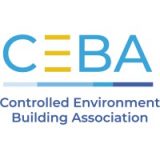Metzger/McGuire Technical Bulletins
T1 The Concept of Semi-Rigid Joint Filler
What defines a semi-rigid filler? Why are semi-rigid fillers used for filling industrial floor joints rather than sealants? Discover the answers to these questions and learn more about the history of the semi-rigid floor joint filler.
T2 Specifying The Proper Joint Filler – Epoxy or Polyurea?
Both semi-rigid epoxy and polyurea joint fillers have distinct advantages and disadvantages in certain settings, depending upon building type and function, project conditions at the time of installation, temperature and humidity of the building, etc. This bulletin helps the specifier decide which material is best suited for a given project.
T3 10 Suggestions for Writing an Effective Joint Filler Specification
A quality joint filler and its proper installation are critical components in ensuring the long term durability of the floor joints on any project. The best way to help guaranty that the owner receives a durable floor joint installation is with detailed specifications outlining the installation process. This bulletin will give specifiers the tools to write concise specifications that leave no doubt as to the expectations of the finished installation.
T4 Standard Floor Joint Filling Details
Illustrations outlining the recommended installation depth criteria and filler base for industrial slab-on-grade saw cut contraction (control) and construction joints.
T5 Semi-Rigid Floor Joint Filler Installation Timing
The timing of a floor joint filler installation plays a key role in both its long term durability and serviceability and the degree to which maintenance will be required. This bulletin outlines the ideal timing for the filler installation and discusses the effects of “early” filling.
T6 Floor Joint Filler Timing for Refrigerated Areas
While timing of the filler installation in ambient environments is very important, in refrigerated areas the timing takes on an even more critical role, as filling joints prior to temperature stability can lead to complete adhesive failure and the need to replace the filler. This bulletin outlines the recommended procedures for ensuring the joint filling work in your refrigerated project is done at the optimal time to ensure long term durability and serviceability.
T7 Filling Joints in Treated & Covered Floors
While most concrete liquid surface treatments do not adversely affect semi-rigid fillers, when used to fill joints in concrete which will receive a “floor covering” a number of potential problems need to be considered.
T8 Flush Filler Profile Is Critical
A semi-rigid filler’s ability to provide joint edge protection is compromised if the finished profile of the filler settles below the joint edges. This bulletin outlines the reasons why a flush profile is critical and the best methods for the installer to ensure a flush filler provides an interruption-free transition across the joints.
T9 Floor Surface Issues from Filler Overfill
In order to achieve a flush filler profile it is necessary to “overfill” the joint and razor or grind off the excess filler flush with the floor surface. This excess filler and its removal can lead to a number of issues, including staining and surface variations.
T10 Floor Joint Filler Color Change
Both semi-rigid epoxy and polyurea joint fillers can shift in color after installation, usually as a result of certain lighting conditions, floor treatments, etc. This bulletin discusses the potential causes for color shift and how to identify which might be causing color change on a given project.
T11 Joint Filler Separation; Causes & Correction
Joint filler separation is perhaps the most common but least understood post-installation filler phenomena. This bulletin addresses how and why joint filler separation occurs, that it occurs by design, and why it should not be considered a “failure” of the filler’s performance.
Additional Reading: ASCC/CPC Position Statement – Joint Filler Separation
T12 Detecting and Preventing Defective Joint Filler Installation Work
The highest quality joint filler is only as good as the quality of the filler installation work. Defective installation work compromises the durability of the filler and can lead to costly filler replacement or joint repair work. This bulletin outlines the signs to look for when filler is not being installed improperly and provides helpful advice on setting expectations of quality to avoid a defective joint filler installation on your next project.
T13 Joint Filler Protrusion In Covered Floors
When used to fill joints under floor coverings, semi-rigid fillers can protrude up through the covering if the concrete experiences thermal changes and slab mass expands. This bulletin discusses the phenomena and how to address it.
T14 Joint Filler Protrusion In Exposed Concrete Floors
Changes in joint dimension resulting from concrete slab dimensional changes or from slab curl relaxation can lead to the filler being extruded up through the joint. This bulletin discusses the phenomena, how to minimize its occurrence and how to correct the condition.
T15 Filling Joints in Curled & Rocking Slabs
Curled or rocking concrete floor slabs compromise a semi-rigid joint filler’s ability to remain in place and to protect joint edges. This bulletin discusses the impact that curled/rocking slabs can have on the filler and what measures should be considered prior to installing the filler in floors curled or rocking slab conditions.
T16 Acceptable Alternate Filling Procedures
Unusual joint conditions on some projects can lead to questions about installation methods, material modifications and required joint filling depths. This bulletin details alternate filling procedures permitted by Metzger/McGuire to address specific joint conditions.
T17 Identification and Correction of Deficient Joint Filling Work
Deficient joint filling work can literally be a ticking time-bomb, compromising joint edge durability after the building owner takes occupancy and begins material handling operations. This bulletin discusses ways to identify and test for a deficient filler installation at the end of the project and how deficiencies can be corrected prior to project turnover.
T18 Frequently Asked Questions
What is Shore A Hardness? Can semi-rigid fillers be used outside? Answers to these and many more frequently asked questions are available in this bulletin.
T19 Recommended Dual-Component Pump Flushing Procedures (Polyurea)
Procedures for flushing out dual component pumps used to dispense polyurea fillers differ from those traditionally used to flush epoxy fillers, and even the procedures used to flush the polyol and iso tanks vary. To follow is a general outline of our recommended procedures for flushing polyurea components out of a dual component pump.
T20 Color Matching Joint Fillers and Repair Materials in Stained/Polished Concrete Floors
Many of our joint fillers and repair products are used in conjunction with polished or stained and polished concrete floors. This technical advisory is designed to help the installer determine the proper use of our products in these types of floors and to avoid potential issues.
T21 Sequencing of Joint Fillers and Repair Materials in the Concrete Polishing Process
Many Metzger/McGuire semi-rigid joint fillers and surface repair products are used in conjunction with stained and polished concrete floor projects. Our technical support team commonly fields questions concerning the best timing in the concrete grinding, honing and polishing process to perform joint filling, surface repairs and polish grouting. This technical bulletin provides further guidance on that topic.
Please login to view the content.






